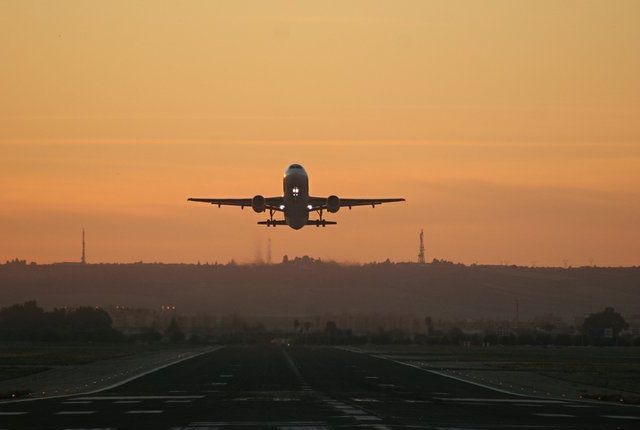Climate Change Could Make Air Travel Even Worse

Curimedia/Wikimedia Commons
After last month's Phoenix heatwave grounded more than 50 flights to and from the city, a new study has shown that climate change might have larger implications for air travel than initially expected.
Average temperatures are expected by many estimates to rise just over five degrees Fahrenheit by 2100, and while the impact of this could be devastating for the planet in myriad ways, it will also impact the airline industry, according to a new study published in the journal “Climatic Change” by Columbia University researchers. Air temperature plays a vital role in an aircraft's takeoff performance -- as temperatures rise, air density declines, increasing the difficulty of takeoff. Researchers at Columbia estimate that soon between 10 to 30 percent of flights taking off during the warmest part of the day will need to severely reduce their weight. Weight in the form of passengers, luggage, or fuel must be reduced before the plane can take off.
So what does this mean for travelers?
Well, mostly more delays and cancellations. Adaptation to our changing environment in the form of new aircraft designs or scheduling adjustments might mitigate some inconveniences, but researchers write, “takeoff performance will still likely be lower . . . due to both the effects of reduced air density and degraded engine performance and thrust at higher temperatures.”
This is especially true of smaller regional jets, like the Bombardier CRJ, whose maximum operating temperature is only 118 degrees, a full four degrees lower than Phoenix's all-time record high of 122 degrees. Larger aircraft from Boeing and Airbus are able to operate at slightly higher temperatures, 126 and 127 degrees, respectively -- but it remains to see what Phoenix's next heatwave has in store.
Nervous flyers should note that there’s also anecdotal evidence that climate change affects plane turbulence; we give you the scoop with what’s really going on with plane turbulence here.
You'll Also Like: